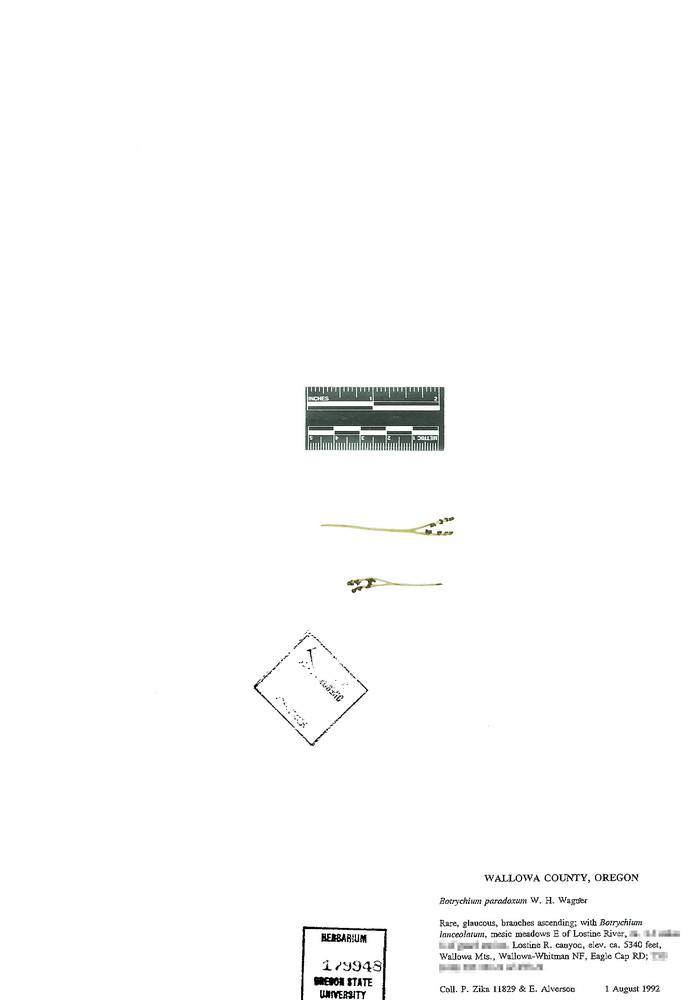
Plants 7–15 cm tall above ground, dull green, glaucous in life.
Common stalks well developed, greater than 2 cm, green.
Trophophores appearing absent, converted entirely to a second sporophore without any trace of lamina.
Sporophores stiffly erect, slightly unequal in length, nearly sessile or with stalks up to 50% the entire sporophore length at spore release, branches much reduced and usually less than 5 mm long, often appearing absent.
Spores 36– 43 μm.
2n=180 (allotetraploid, derived, in part, from an undescribed diploid that resembles B. montanum).
Mesic subalpine meadows, usually among grasses, sedges, and low forbs, but occasionally in denser herbaceous cover or under trees. 1500–1800 m. BW. CA, ID, WA; northwestern North America. Native.
Botrychium paradoxum is unique in having two sporophores and no trophophore. However, other species occasionally produce forms with the trophophore partly or completely transformed into a second sporophore. These usually have sporophores of clearly unequal lengths or with elongate branches, and often occur as isolated individuals among normal, trophophorebearing plants. As currently circumscribed, B. paradoxum contains two distinct genotypes.
as described under Botrychium paradoxum
Trophophores converted entirely to second fertile segment, stalk 1/2 length of fertile segment. Sporophores double, 2 per leaf, 1-pinnate, 0.5--4 cm. 2 n =180.Sporophores in June to August. Difficult to detect, plants usually hidden under other vegetation, in snowfields, secondary growth pastures; of conservation concern; 1500--3000 m; Alta., B.C., Sask.; Mont., Utah.The leaf structure of Botrychium paradoxum is uniform and unique. Very rare teratological individuals of other moonwort species may have trophophores partially or wholly transformed into sporophores.Botrychium × watertonense W.H. Wagner, known only from one locality in western Alberta, is the sterile hybrid of B . hesperium and B . paradoxum . It can be identified by its trophophore pinnae; all are bordered with sporangia. It may reproduce by some unknown mechanism, such as unreduced spores (W.H. Wagner Jr., F. S. Wagner, et al. 1984).